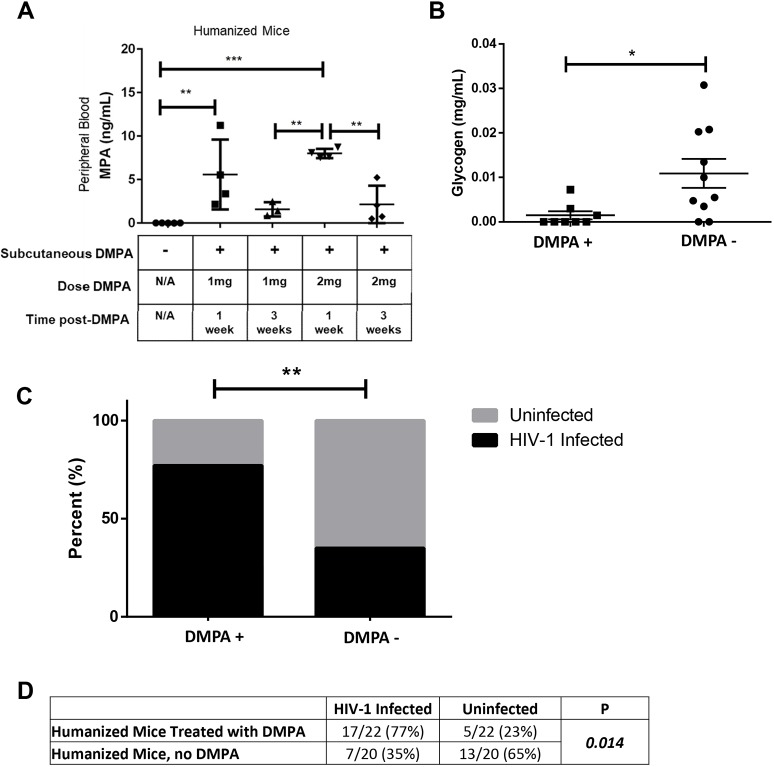Fig. 5.
DMPA is associated with lower vaginal glycogen and increased HIV-1 susceptibility in humanized mice. (A) To determine whether a subcutaneous injection of DMPA in the nape of the mouse neck could induce circulating concentrations similar to those observed in women, we administered 1 (N=7) or 2 mg (N=8) of DMPA or saline (control, N=5) to NRG mice (background strain of the humanized mice), collected peripheral blood by cardiac puncture 1 or 3 weeks later, and quantified MPA in the serum using ELISA. (B) Glycogen was quantified in the vaginal homogenate of humanized mice (controls, no hormonal treatment, N=10) and those treated with DMPA (N=8). Vaginal glycogen was significantly lower in the humanized mice treated with DMPA (Mann–Whitney U-test; P=0.017). (C) Control humanized mice (no hormonal treatment, N=20) and humanized mice given 2 mg DMPA (N=22) were challenged intravaginally with HIV-1. The infection rate in DMPA-treated humanized mice (77%) was higher than that in untreated control humanized mice (35%) (χ2; P=0.014). (D) The proportion of DMPA-treated humanized mice that became infected with HIV-1 was significantly greater (χ2; P=0.014) than the proportion of untreated control humanized mice that became infected following intravaginal challenge. N/A, not applicable. *P≤0.05, **P≤0.01, ***P≤0.001. Data are mean±s.e.m.

